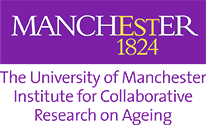Manchester scientists discover new method to detect ageing cells
13 October 2016
Scientists at The University of Manchester have found a new way to look for ageing cells in the body. The team led by Professor Paul Townsend and Professor Vassilis Gorgoulis have developed a more accessible method to measure cellular senescence, the process of cell deterioration with age.
Until now, methods to detect biomarkers – measurable biological indicators - in cell ageing have been very limited in their use. The new simpler process could offer considerable benefits for research and clinical practice. “The method we have developed provides unprecedented advantages over any other available senescence detection products – it is straight-forward, sensitive, specific and widely applicable, even by non-experienced user”, said Professor Townsend.
The new method will also help with the impact of emerging cellular rejuvenation therapies. “By the better identification – and subsequently elimination of – senescent cells, tissues can be rejuvenated and the health span extended”, said Paul Townsend.
Paul is Professor of Molecular Cell Biology and co-Director of the Manchester Centre for Cellular Metabolism. The research on the new methodology is published in the journal Aging Cell entitled ‘Robust, universal biomarker to detect senescent cells in biological specimens’ and has resulted in two pending patents in the UK.
Further details and full press release: New method to detect ageing cells – and aid rejuvenation therapies - developed by researchers
